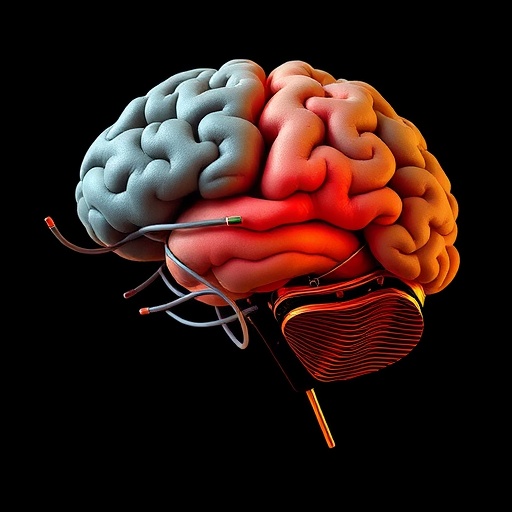In the realm of neuroscience, understanding how humans process and eventually diminish the memory of threats has profound implications for mental health treatment. A groundbreaking study recently published in Translational Psychiatry unveils how social support acts as a powerful facilitator in retaining the extinction of threat memories, potentially rewriting how clinicians approach trauma and threat-related disorders. Using advanced fMRI technology, this research sheds light on the neural underpinnings that enable social support to prevent the spontaneous recovery and reinstatement of threat memories, a finding that could revolutionize therapeutic interventions.
Threat extinction is a critical psychological process in which an individual learns to dissociate a previously feared stimulus from its harmful associations. However, the durability of this extinction is fragile, often vulnerable to relapse through spontaneous recovery or external stressors that trigger reinstatement of the original threat memory. Confronting this challenge, the new study elucidates how social support—being surrounded by empathetic and reassuring individuals—can enhance the retention of extinction, thus offering a natural mechanism to stabilize emotional recovery.
The investigation utilized functional magnetic resonance imaging (fMRI) to probe into the brain activity of human participants exposed to conditioned threat stimuli and subsequently undergoing extinction training. Participants who received social support during the extinction phase demonstrated significantly diminished re-emergence of threat responses compared to those left to undergo extinction alone. This suggests a robust effect of social buffering on the neural circuits responsible for threat memory retention.
Crucially, the study pinpoints a complex thalamo-cortical network as the central neural substrate mediating this effect. The thalamus, often described as the brain’s relay station, was found to coordinate with multiple frontal cortical areas, notably involved in higher-order cognitive processing and emotional regulation. Additionally, the research highlights the participation of the inferior occipital and parietal lobes, which are associated with visual processing and spatial awareness, respectively, suggesting that the integration of sensory and cognitive information is fundamental in modulating threat extinction retention.
The frontal cortex, particularly regions involved in executive function and emotion regulation, appears essential in leveraging social contextual cues to reinforce extinction memories. When a person receives social support, these cortical areas likely help reframe the perceived threat, reducing fear responses and solidifying newly learned safety associations. This mechanism may explain why social environments play such a pivotal role in managing anxiety and trauma-induced conditions.
Notably, the inferior occipital and parietal lobe activations underscore the multimodal nature of social support effects, as these brain regions contribute to processing face recognition and body language cues intrinsic to human social interaction. By decoding these supportive signals effectively, the brain better consolidates extinction memories, illustrating a sophisticated interplay between affective and sensory processing during threat regulation.
The implications are profound, especially in the context of psychiatric disorders characterized by dysfunctional threat memory, such as post-traumatic stress disorder (PTSD) and phobias. Traditional exposure-based therapies sometimes suffer from high relapse rates, partly due to inadequate retention of extinction memories. Introducing structured social support strategies could serve as a low-cost, highly scalable adjunct to psychotherapy, improving outcomes by harnessing the brain’s inherent circuitry optimized for social engagement.
Furthermore, the study’s findings illuminate potential neural targets for novel interventions. By understanding which components of the thalamo-cortical circuit are modulated by social support, future research could explore neuromodulatory techniques such as transcranial magnetic stimulation (TMS) or neurofeedback aimed at bolstering extinction retention. These treatments might mimic or amplify the natural resilience provided by social support, offering hope for individuals without access to consistent social networks.
Equally important is the translational nature of this research. By correlating behavioral outcomes with neuroimaging data, the investigators bridge basic neuroscience with clinical application, making a compelling case for integrating social factors into mental health paradigms. This holistic approach acknowledges that human brains evolved to function in social contexts and that therapeutic success may thus depend on leveraging these innate mechanisms.
The methodology underpinning this discovery demonstrates courage in navigating the complexity of human social behavior within the constraints of neuroimaging technology. Participants were carefully monitored and their psychological responses quantified across phases of conditioning, extinction, and retention, providing a rigorous experimental framework. This comprehensive approach ensures that findings are robust and highly relevant to real-world scenarios.
Moreover, the study highlights that social support’s benefits are not merely psychological but deeply embedded in neural architecture. This revelation challenges the often siloed thinking around environmental versus biological factors in mental health, advocating instead for a nuanced perspective that appreciates the inseparability of social interaction and brain function.
While further investigations are needed to generalize these findings across diverse populations and threat modalities, the groundwork laid here is promising. Future studies might explore how individual differences in social cognition or existing social networks influence extinction retention and whether similar patterns hold true in clinical cohorts.
In sum, this pioneering study not only elucidates the complex brain networks involved in social support-facilitated threat extinction retention but also opens new horizons for leveraging social context as a therapeutic asset. By tapping into ancient neural pathways designed for collective resilience, mental health professionals could enhance the durability of extinction memories, reducing relapse and improving long-term recovery for trauma and anxiety sufferers worldwide.
As neuroscience continues to unravel the profound interconnectedness of our social nature and brain function, such research offers a beacon of hope. It encourages society and healthcare systems to prioritize social connectivity as a fundamental ingredient in psychological well-being, making the case that sometimes the best medicine is simply being there for one another.
Subject of Research: The role of social support in facilitating threat extinction retention through thalamo-cortical neural circuits.
Article Title: Social support facilitates threat extinction retention in humans: an fMRI study.
Article References:
Gong, Y., Su, S., Li, P. et al. Social support facilitates threat extinction retention in humans: an fMRI study. Transl Psychiatry 15, 455 (2025). https://doi.org/10.1038/s41398-025-03653-4
Image Credits: AI Generated




